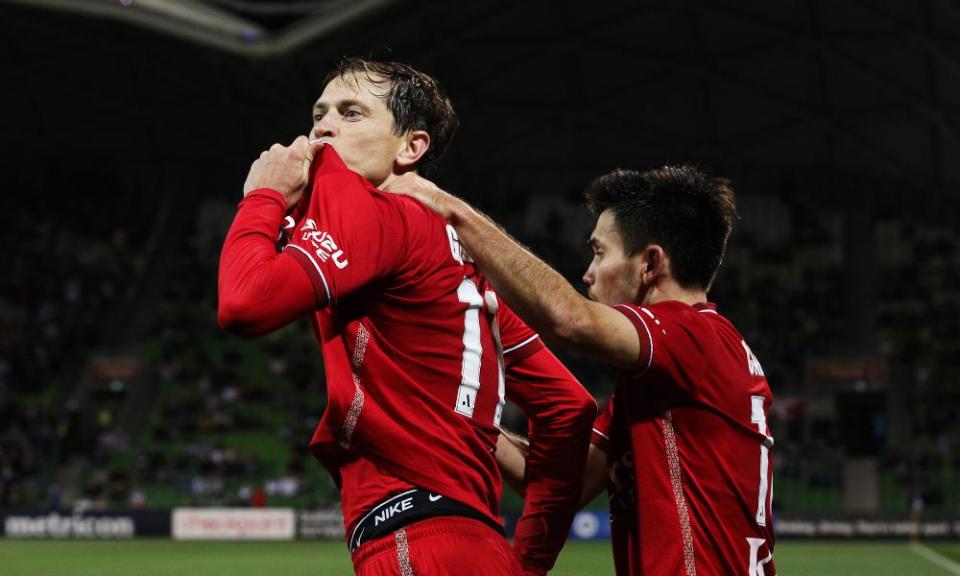What constitutes a good game of A-Leagues football

What one prefers is, at its heart, an ideological preference; a battle of perceived style against perceived substance
Perhaps one of the scant benefits of the dearth of A-League Men fixtures being staged at present is that it offers plenty of opportunities for introspection and pontification.
Such is in the fluid nature of Australian football the potential topics are legion but, two months into ALM’s latest brave new era and with a nascent sample size to call upon, mayhaps a particular existential question bears examination: just what constitutes a good game of A-Leagues football? And, in determining that, what are the pros and cons of such a lens?
Take, for example, the only two games that were able to be staged across the league in what was nominally round nine of the campaign last week: Melbourne Victory against Adelaide United on Saturday evening and Melbourne City against Western Sydney Wanderers on Sunday afternoon.
Related: A-Leagues fixture pile-up will clear but concern rises over Covid’s long-term impact | Joey Lynch
Inevitably, the revelations from United’s Josh Cavallo – that he was subjected to homophobic abuse during the former – casts an inescapable pall but, before their reveal, initial reaction to the game was positive. Nicholas D’Agostino and Craig Goodwin provided two goal-of-the-season candidates, Isaías’s red card and a disallowed goal added a dash of controversy, and its conclusion was marked by chaotic end-to-end football as two rivals played for the badge.
That this apotheosis was preceded by nearly 90 minutes of the footballing equivalent of the Ludovico Technique – D’Agostino’s 84th minute-thunderbolt was the first time either side put a shot on target – felt beside the point. In an age of social media clips, rambunctious headlines and an established football media too small to consistently offer in-depth coverage, a chaotic crescendo was seemingly enough to earn a passing grade.
Conversely, in City’s 3-3 draw with the Wanderers, storyline factors served to supplement, not supplant, the action on the pitch and their potential ramifications.
With Wanderers coach Carl Robinson confined to a hotel, the external narrative of his tenuous tenure was blunted and, perhaps due to this, the thrust and parry of the contest shone through. Be it Steven Ugarkovic pulling the strings, Marco Tilio’s immediate game-changing introduction off the bench, Keijiro Ogawa giving the Wanderers a new dimension at the top of their attack, or both sides being forced to come from behind, the football was the star of the show at AAMI Park. The late VAR drama surrounding a potential handball on Rostyn Griffiths felt like it came to the detriment of the game, rather than finally providing something by which to remember it.
Stepping back, both archetypes took vastly different journeys to produce ‘good’ games. But is one better than the other? Not really.
What road one prefers is, at its heart, an ideological preference; a battle of perceived style against perceived substance. And while individual predilection will be governed which side of the spectrum one falls upon, the theatregoer or the footballing intransigent, both the yin and the yang have their place in ALM – even if the former has been disproportionately represented thus far in 2021-22.
With more technically sound leagues out there, the majority of ALM observers largely do so out of an emotional connection to the league and/or one of its clubs. In this scenario, the narratives, pride, atmosphere or result are what keep them coming back week in and week out. It is Australia’s league, and despite what follows the protection of this uniqueness is still the most important thing facing the game.
But much like the perils of staring into the ‘Peak A-League’ abyss, an unquestioning embrace of the boom crash opera risks coming at the expense of a level of expectation for ALM sides to demonstrate some level of innovation and functionality. At what point does the latest round of recycled, horseshoe possession that develops because a team was denied transition become grating? And at what point does the play of the national team and the grassroots begin to suffer by osmosis from a premier domestic league wherein ‘passion’ takes precedence over function (if it hasn’t already happened)?
One cannot legislate an improvement in playing style. To do so is to remove player and coach agency and the essence of what makes football, football. Evolution will likely be delivered by a rise in external expectations forcing those whose job it is to ultimately deliver an improved on-field product – predominantly coaches, football departments and club executives – to rise to the challenge lest they alienate those whose eyeballs they covet.
At present,advanced statistics and authoritative language are frequently enough to pass as an expert regardless of the validity of one’s conclusions or underlying logic. But because there is a dearth in demand, it is not an aspect of coverage being flooded with enough options that will allow the cream to rise to the top. Further, the act of actively educating its audience is a difficult and thankless task in a market where football is a subservient code, where the cons often outweigh the benefits.
Growing the game and potential audience will help with this but, in a crowded market, be initially driven by narrative and storylines providing a hook to get a critical mass of punters through the door. It is easier said than done, but it is a level of introspection which is important for ALM.

 Yahoo Sport
Yahoo Sport 





































